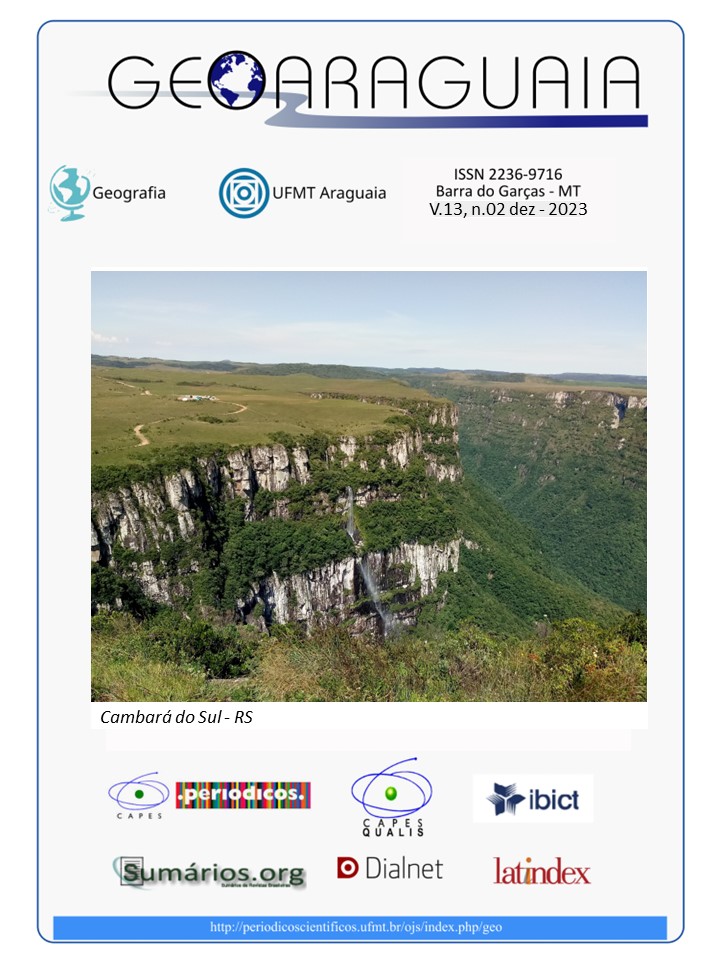Relações entre ações antrópicas e taxas de turbidez na bacia Hidrográfica do Rio Maracujá, Amarantina-MG
Keywords:
Fluvial geomorphology, erosive processes, hydrosedimentary dynamicsAbstract
Human activities represent a factor that conditions the reduction of water infiltration into the soil and, consequently, the increase in surface flow. These factors destabilize the slopes and favor soil erosion processes, attributing a more significant sedimentary load to the water flows in the channels, reflecting in an increase in turbidity rates. Therefore, this work aims to investigate the effects of anthropic activities on the hydro-sedimentological dynamics and morphology of the Córrego do Barreiro and Rio Maracujá channels in the District of Amarantina, in Ouro Preto, Minas Gerais. This issue is very important because human occupation in Cachoeira do Campo, Amarantina and Santo Antônio do Leite has meant that the soil is increasingly used, the vegetation cover removed, enabling the intensification of erosion processes and sudden changes in the local topography. The methodology consisted of monitoring turbidity rates in the dry and rainy seasons and mapping of land use and occupation in the investigated area. It was observed that the area has a large pasture area and exposed soil patches. This should contribute to the supply of sediments to the watercourses. The turbidity rates varied over the period and their values can be associated with the conditions of land use and cover and the relationships between soil conditions and the rainfall that occurred. The release of domestic effluents is another factor that must have impacted the turbidity values observed mainly in the dry season.
Downloads
Published
How to Cite
Issue
Section
License
A Revista Geoaraguaia poderá solicitar alterações de ordem normativa, ortográfica e gramatical, com vistas a manter o padrão culto da língua. Se necessário, alguns ajustes normativos podem ser feitos pela revista, porém respeitando o estilo dos autores.
As provas finais não serão enviadas aos autores.
As opiniões emitidas pelos autores dos artigos são de sua exclusiva responsabilidade.





 A revista
A revista